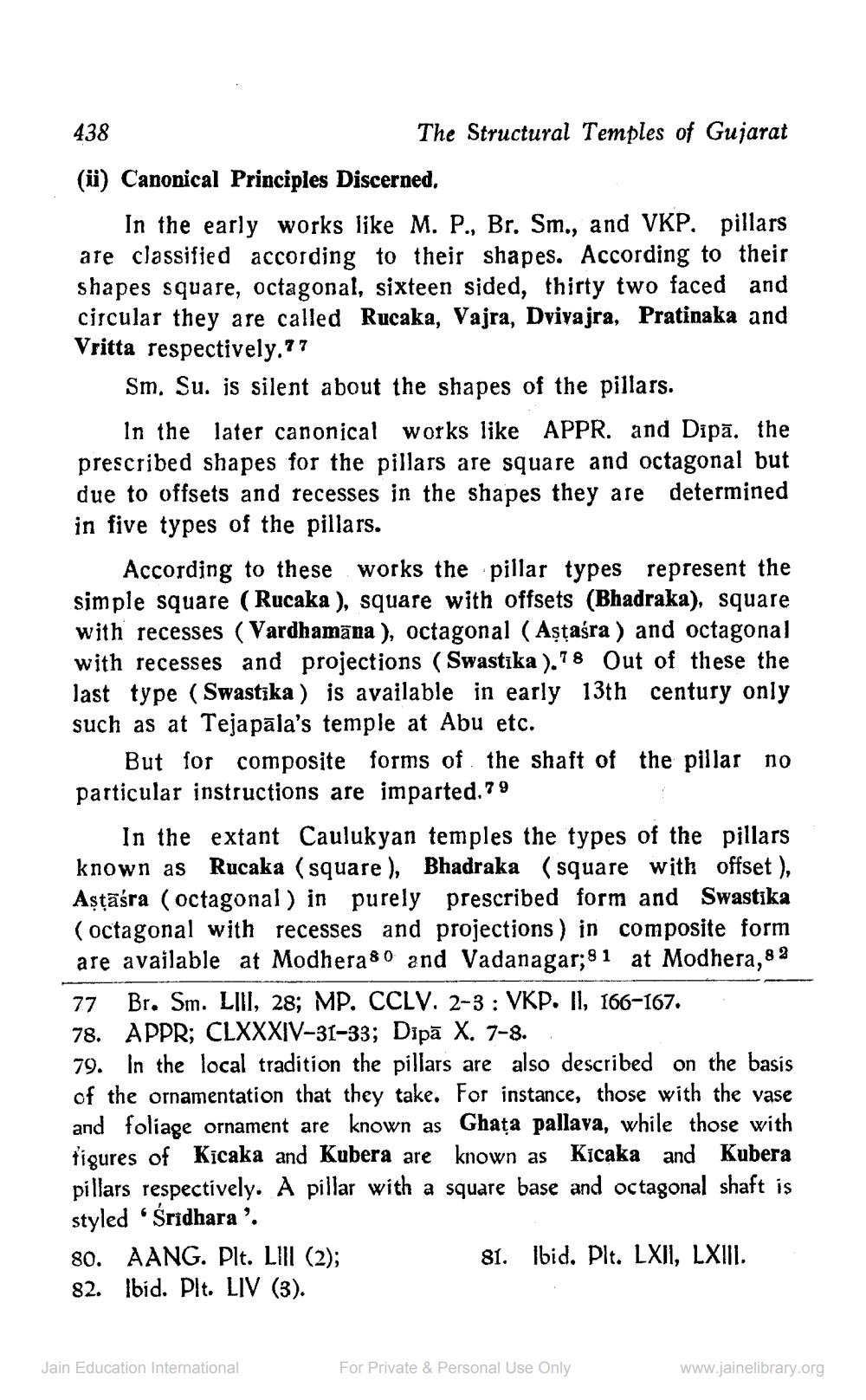________________
438
The Structural Temples of Gujarat (ü) Canonical Principles Discerned.
In the early works like M. P., Br. Sm., and VKP. pillars are classified according to their shapes. According to their shapes square, octagonal, sixteen sided, thirty two faced and circular they are called Rucaka, Vajra, Dvivajra, Pratinaka and Vritta respectively. 7 7
Sm. Su. is silent about the shapes of the pillars.
In the later canonical works like APPR. and Dipā. the prescribed shapes for the pillars are square and octagonal but due to offsets and recesses in the shapes they are determined in five types of the pillars.
According to these works the pillar types represent the simple square (Rucaka ), square with offsets (Bhadraka), square with recesses (Vardhamāna), octagonal (Aşțaśra) and octagonal with recesses and projections (Swastika ).78 Out of these the last type (Swastika) is available in early 13th century only such as at Tejapala's temple at Abu etc.
But for composite forms of the shaft of the pillar no particular instructions are imparted. 7 9
In the extant Caulukyan temples the types of the pillars known as Rucaka ( square), Bhadraka (square with offset), Așțāśra (octagonal) in purely prescribed form and Swastika (octagonal with recesses and projections) in composite form are available at Modhera 80 and Vadanagar;81 at Modhera, 8 2 77 Br. Sm. LIII, 28; MP. CCLV. 2-3 : VKP. II, 166-167. 78. APPR; CLXXXIV–31-33; Dipā X. 7-8. 79. In the local tradition the pillars are also described on the basis of the ornamentation that they take. For instance, those with the vase and foliage ornament are known as Ghata pallava, while those with figures of Kicaka and Kubera are known as Kicaka and Kubera pillars respectively. A pillar with a square base and octagonal shaft is styled 'Sridhara'. 80. AANG. Plt. Lill (2);
81. Ibid. Plt. LXII, LXIII. 82. Ibid. Plt. LIV (3).
Jain Education International
For Private & Personal Use Only
www.jainelibrary.org




